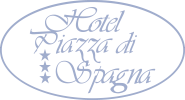PAESAGGIORNALIERO - Enrico Pulsoni
ENRICO PULSONI
Paesaggiornaliero (Daily Landscape)
Inaugurated on May 3rd, 2007 until June 30th, 2007
Curated by Antonio Capaccio
The new slaves on planet Earth live a credible protected and nursed life. This life is apparently free from effort and any imposition but is violently marked by an infinite chain of addiction and exposed to the risk of losing itself in a nullified vortex with no return. This infinite receiving in our existence deprives us of the only and irreplaceable gift in which is possible to be embodied. ‘it’s a forced existence, which makes us slaves thanks to all that is virtually given. But nothing can be returned, and we are oppressed by this inextinguishable debt. If we try to subtract ourselves from this bond, we rarely find help to preserve us from the catastrophes of this world. At times our private sufferings, mental and physical, our uncurable idiosyncrasies, are the venom that runs through our veins. Consequently, we are unable to adapt, we feel left outside, helpless, oppressed and unfit for our time. From these tight chains that we are forced to live with it we can’t look very far, and we fear to lose perspective. However, through this small opening, through the limit of our insecurities and inadequacy, we find the only measure of moral conduct. In a daily landscape where everything is placed on the background as traces and fragmentation of distant figures, we feel, if we are lucky enough, our loneliness rising.
Enrico’s work for the Showcase of BRECCE, fits in the cycle called “Grottesche/Blooming of modernity” taking place at the same time in Rome. ‘It’s formulated in different encounters, concerts, exhibitions between December 2006 and second quarter of 2007. It is the conclusive cycle of a project that was first started in 1999 with a different cycle of exhibitions, literary encounters, concerts in Rome and Tivoli. The grotesque represents a clear prototype of modern work, as a place of encounter and attraction of different senses. It’s a hybrid field and perceptive ambiguity, refusal of space and fusion of species. A classic and Arabic inheritance, erotism, citation, decorative, lightness but also invasion of hypnagogic and psych. As a renaissance artistic genre, the grottesca interlaces the antique with a new and sometimes anticlassical sensibility. the grottesca is also an example of a modern form of linguistical and expressive synthesis as abbreviations and essentiality. The grottesca is a shorter line tying sense zones and linguistical numbers that are apparently distant and irreconcilable. It places itself at the margins of the narration, out of focus, a transitional painting. The grottesca anticipates the modern problematic of drifting places, but also suggests a possible antidote. The genre of the grottesca was born in Rome between 1480 and 1490 with a rising interest of paintings inside caves (cave in Italian: grotte) such as the rooms of the Domus Aurea. Rome was the place where the taste for the grottesca was developed and spread around Europe. Today Rome is the place to revive a discussion over the roots of contemporaneity. It might be an attempt to free the artistical experience from the delegitimization of the not place.
(Antonio Capaccio)
Enrico Pulsoni (Avezzano, 1956) exhibits in the mid-seventies. He participated to “1960/1980. Lines of the Italian artistical research” (Rome, Palazzo delle Esposizioni, 1980), and others important exhibitions in Italy and abroad.
Personali al Segno (Rome), Peccolo (Livorno), Tommaseo (Trieste), Emicla (Gaeta), Empiria (Rome), il Bulino (Rome) and at Leonhardi Museum of Dresden. ‘He promoted various important initiatives, including Edizioni Cinquantunosettanta and collana Duale, edited dal Bulino.

HOTEL PIAZZA DI SPAGNA DI GIOCONDI ELISABETTA SAS
Via Mario de’ Fiori, 61
0187 ROMA
P.IVA: 05070861009
CIN: IT058091A1VJVOKJMJ
Contact Us
© Copyright 2020 HOTEL PIAZZA DI SPAGNA. All rights reserved. P.IVA 05070861009 - Privacy Policy


